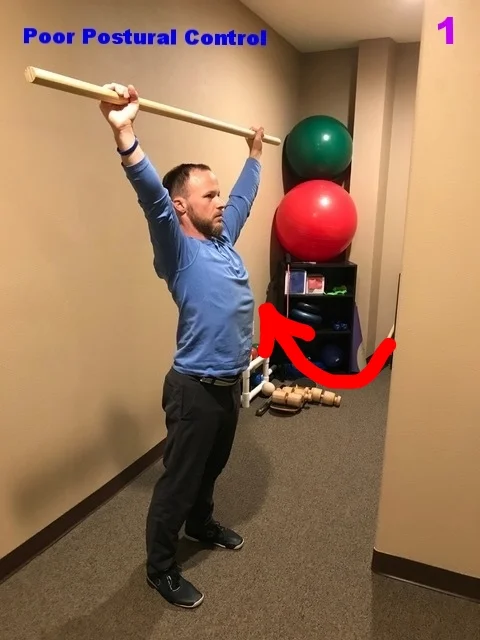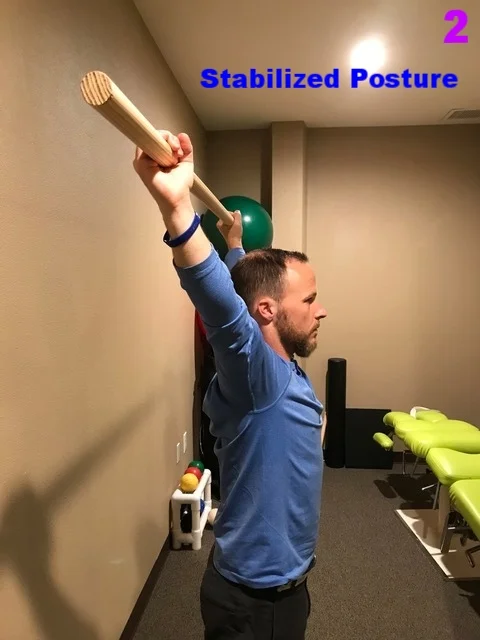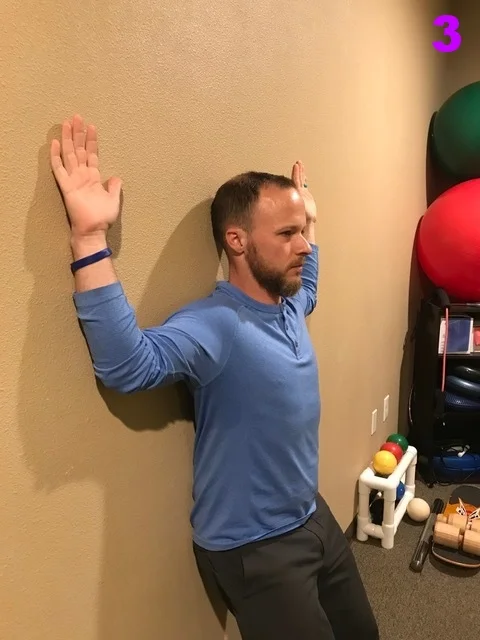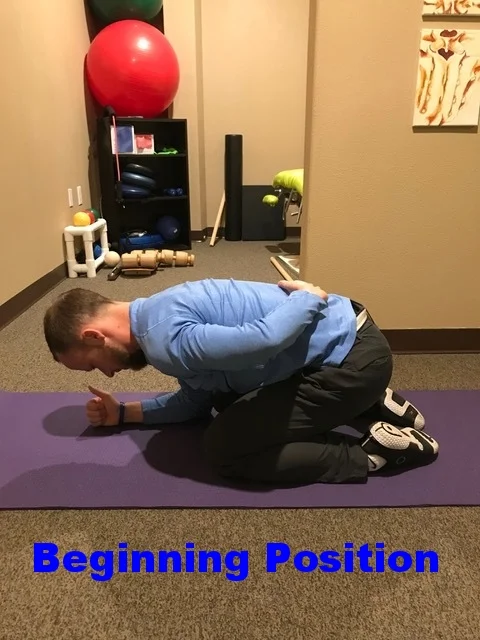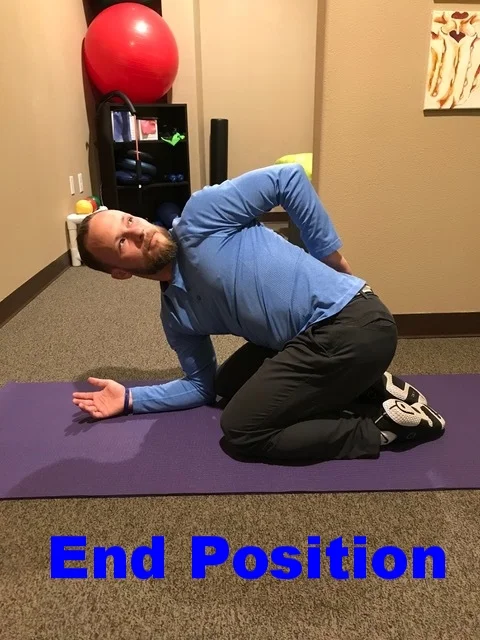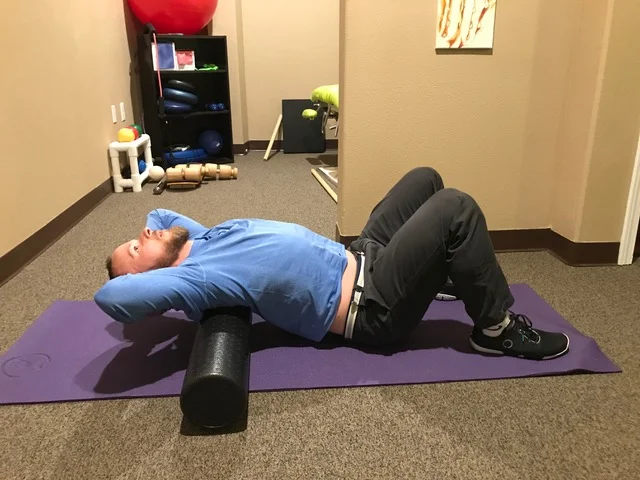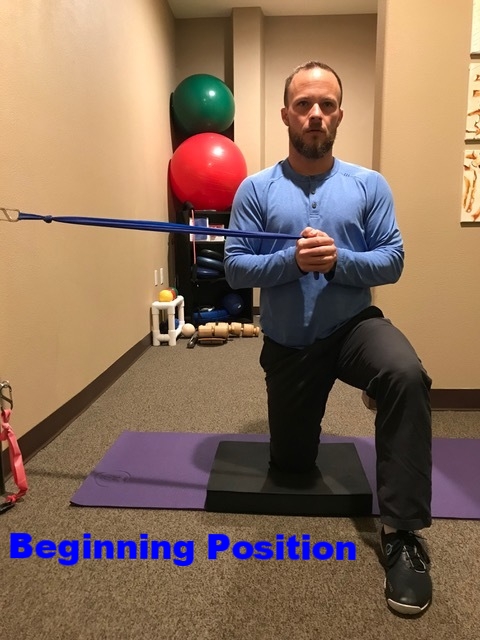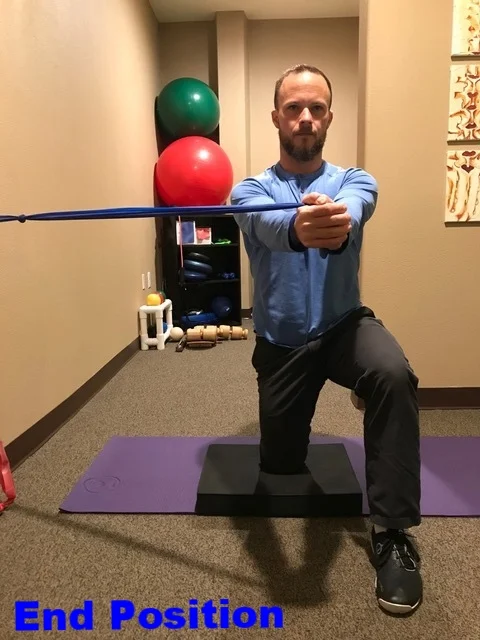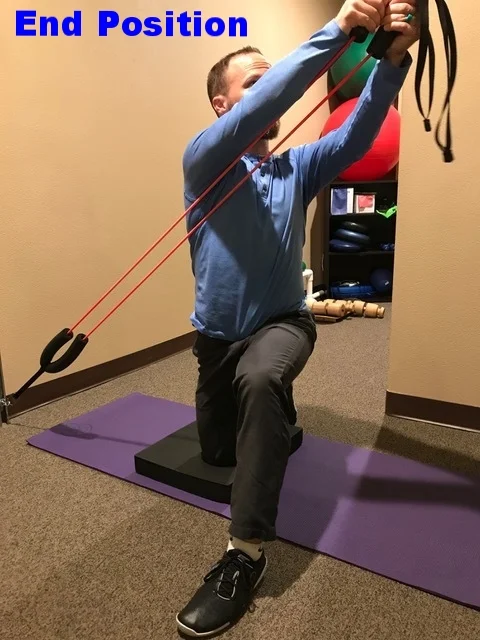This week I have a guest speaker on my blog- Dr. Ryan Gloeckner aka "Doc Glock". Dr Gloeckner is a close personal friend and an outstanding Chiropractor. He works with Crossfit enthusiasts and Soccer players out in Tualatin Oregon. Doc Glock will be talking about some strategies to stabilize and mobilize the shoulders and upper back today. If you want to keep up with his frequent rehab and functional movement centered blog posts, please check out his website: https://www.adaptandexcelchiro.com/about.html
Sometimes my clients are puzzled when they tell me about pain or restricted mobility in their neck, shoulders, or low back, and I start working on the problem by assessing their upper- and mid-back (aka the thoracic spine). I begin there because restricted mobility in the thoracic spine is often the root cause. If the thoracic spine is unable to properly move through certain ranges of motion (flexion, extension , side bending, and rotation), then nearby joints are often forced to compensate. To fully assess and treat pain and stiffness in the neck, shoulders, and low back, I first ensure adequate mobility and strength in the thoracic spine. For people who do overhead weight lifting, thoracic spine problems may present as restricted and often painful neck, shoulder and low back motion. This is often the result of what is known as over-extension (aka hyper-extension), and is a compensation that the body undergoes in order to allow you to continue to perform athletically. Hyper-extension causes a joint to move beyond the motion that it was designed for. This can lead to many serious issues such as; joint hyper-mobility, early onset joint degeneration, ligament/tendon tears and arthritis. To treat a problem in the thoracic spine, I use hands-on adjusting techniques, and I teach exercises to complement and maintain the joint alignment correction that is achieved during a typical treatment in my office. Optimizing the function and stability of the joints in the body allows my patients to continue increasing strength and flexibility independently. Here are some quick ways to check your thoracic spine mobility and make improvements on your own:
Check yourself -
1.) Overextended lumbar spine from an immobile thoracic spine (notice the ribs poking out).
2.) Adequate thoracic extension, allowing good stacking of neck and keeps the ribs inline with the hips.
3.) The "Wall Angel" tests thoracic mobility. Head, hands, and full spine should touch wall. Ribs down. ** An inability to maintain all points of contact indicative of a thoracic mobility issue.**
Lumbar Locked Rotation:
Beginning and end positions: Rotate as far as you can, and focus on opening the chest as much as possible. Work both sides for 2-3 sets of 10-15 reps.
Thoracic Spine Extension using a foam roller:
Hold these positions for 30 seconds or more. Take care to brace your core so as to prevent the flaring of the ribs (illustrated in the "poor postural control" image in the Check Yourself section of this blog post).
Pallof Press:
Use a stretchy band attached to a stationary anchor point, at shoulder height, at your side. Position yourself so that there is pretension in the band before you perform the movement. Press your hands forward, and resist spine rotation during the movement back and forth.
Resisted Lifts for Thoracic Rotation Strength:
Similar to exercise above- Put the band attached to an anchor point by your side at ground level. Pull the band up in an arc (think of mimicking the motion of tossing an object up towards opposite shoulder).
I hope you all enjoyed Doc Glock's guest post! If you found what he had to say interesting, visit his website for more content : https://www.adaptandexcelchiro.com/



